Archive for the ‘Contemporary Art’ Category
The Essex Street Market Recordings 3
Arancini Bros is the latest addition to the Essex Street Market and their rice balls are delicious. I met Julia de la Gata at the new location and she shared the recipe for the Bianco Verde as well as its history. Listen to Julia’s account below:
Listen to the full collection of recordings.
The Essex Street Market Recordings 2
Ramona Rodriguez of Luis Meat Market in the Essex Street Market sells a prepared pork for the holidays. This is the recipe that she shared with me when I was soliciting recipes from the vendors – “El Pernil Adobado”. Click the play button below to listen to Ramona’s preparation.
Listen to the full collection of recordings.
The Essex Street Market Recordings

Proposed work “Recetas y Gangas” audio montage of vendors projected onto the street through a bullhorn mounted on the facade of the Essex Street Market
Commonly street markets around the world have both an outdoor and indoor space. The perimeters of the market may extend on to the street to invite pedestrians in to the market. Rather than walls, street markets may present large openings and awnings to create an arcade where people are at once outside and inside. The Essex Street Market in the Lower East Side of New York City does not have a side walk extension beyond sandwich boards and signage outside its brick wall. The Essex Street Market facade does not even present pedestrian level windows for those outside to peer in to the interior. The facade is rather an uninviting brick facade, perhaps a planned institutional barrier that Mayor La Guardia desired as he sought to take cart vendors off the sidewalk in an effort to clean up the streets from obstacles and noise. For the exhibition “Lettuce, Artichokes, Red Beets, Mangoes, Broccoli, Honey and Nutmeg: The Essex Street Market as Collaborator” at Cuchifritos curated by Nicolás Dumit Estévez Raful , I have sought to extend the Essex Street Market on to the sidewalk through sound.
There is a long history of market vendors announcing, singing or chanting their goods to the public. On Essex Street before cart vendors were moved off the street and into the market, they would call out their goods, hoping to attract buyers. I imagine that when the market first opened this practice continued. Today, walk through a traditional Latin American market and you will hear various products sung in to the air. To develop my project, I solicited vendors to vocalize their products and the more performative, the better. Only two vendors played along, one eagerly – Rosella Albanese from Pain d’Avignon and another through a bit of coaxing – Yanivis Rodriguez of Luna Brothers. You may listen to each of their recordings below.
Yanivis Rodriguez, Luna Brothers
Rosella Albanese, Pain d’Avignon
When I was trying to talk Yanivis into the recording while she worked the register, a shopper began to tell me about her recipes for preparing yams. It was an older Dominican woman, perhaps in her 60s who after describing her recipe, told me about the many health benefits of yams.
As I was having a difficult time convincing vendors to sing or chant their goods, I decided to request a recipe from them. This turned out effective as I’ve collected several recipes from vendors and customers. Over the next few weeks, I will describe the interactions with the subjects and you may listen to the shared recipe. The final piece is an audio montage that captures a portrait of the Essex Street Market through the voices of vendors and customers alike all recorded within the market. The audio montage is titled “Recetas y Gangas” (Recipes and Deals) and is available online. And please check out the show at Cuchifritos in the Essex Street Market opening on February 22nd, 2016.
Morning Tequila, Nachos and Tacos
Denver-based artist Tony Ortega shared recent videos montages incorporating a sequence of rotoscope animation that he created in a workshop that I taught last summer. The montages are so much fun that I felt the urge to share. The sequences are well selected and the timing is excellent, nice way to kick off a Tuesday morning!
Chicano Western from Tony Ortega on Vimeo.
Puro Party from Tony Ortega on Vimeo.
Tony states:
I created the art video Puro Party to explore my interest in identity and hybridity. I am using a variety of I pad apps, rotoscoping animation, appropriated gifs and appropriated music. In creating these videos, I am using grids to organize the composition and I incorporate pattern and repetition. In my creative process I use distortion and exaggeration for emotional effect. My work interweaves, juxtaposes unlikely images from American, Mexican and Chicano cultures that include icons, symbols, history, humor and the contemporary world to foster opportunities for the bending of meaning.
Who Is ISIS?

Creatures filled with hatred toward other human beings.
Mugabe Is Old
I have been working on a series of portrait illustrations of individuals that I consider akin to dictators over the past year. The series is titled “Drunk with Power”. The intention of the illustrations is to make them into animations which is happening very slowly. Occasionally, I’ll make a quick animation, such as the one above. There is also a web version of this animation that uses code for the background rather than triangles colored using markers: http://rmz.nyc/mugabe.html
Brooklyn Real Estate Summit
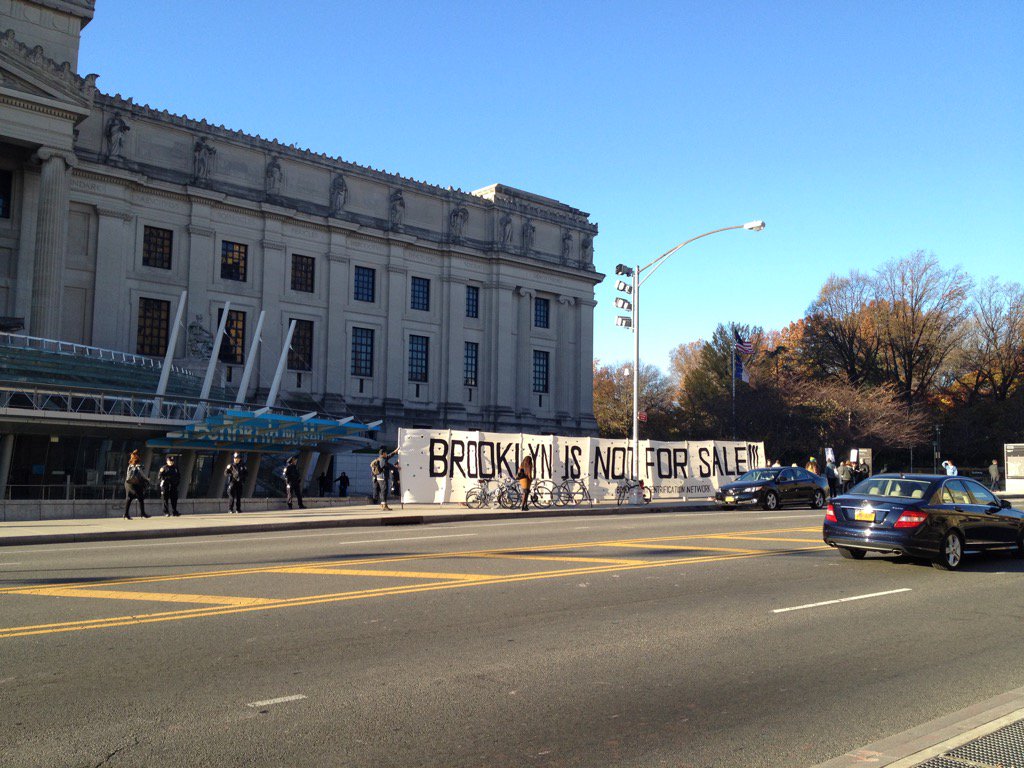
Sadly the Brooklyn Museum hosted a real estate developers summit. Some 600 individuals registered for the 6th Annual Real Estate Developers Summit at the Brooklyn Museum today. I’m saddened that the Brooklyn Museum would host such a summit for individuals to gather, network and “shape the borough into a place to live, work and play”. The question is for whom is the borough shaped and of course by whom? Historically, it is for the highest payer/player. These people gather to figure out how to make more money and unfortunately when it comes to “shaping” the city, it’s all about money, not about creating better neighborhoods, or livelihoods, or for the care of character or any sense of history… it’s about money.
Some 70-100 people gathered in protest in lively fashion for the first time at this real estate conference. Is it too little too late? At NYC speeds, probably so, but for those who could weather the cold under the shadow of the Brooklyn Museum, it was well worth it. The community, neighborhood, artists should protest the next First Saturday at the Brooklyn Museum. It is inexcusable that this institution would host a conference of the people who have displaced so many residents, particularly artists as recently as the targeted development of Gowanus:
Developer Eli Hamway purchased a block of three Gowanus buildings for $21.2 million this spring. Hamway denied lease renewals to the more than 250 artists who rent studios in these buildings, a move many of them see as a signal the building owner wants to free the building of renters to make it easier to flip the property.
Hong Kong Glitch
I don’t recall what compelled me to start saving images from the Hong Kong protests last year. However, as I saved them, I began manipulating the digital files by changing the files extension to be able to open them in a basic editor as text and to read the meta data on the images. As I did so, I would rearrange the data making up the image itself. It seemed appropriate to confuse the file by cutting data, changing the order of the data or adding new data. Not unlike the Occupy Movement here in the United States, the Umbrella Revolution appeared as a young and inspired population that would eventually dissipate against an all powerful ruling force. Perhaps, when this generation comes to power, they will recall the energy and desire of this time. I’ve decided to arrange the images into a small book that is available on Blurb or you can merely view the images online. Below are a few images from the series of 20.

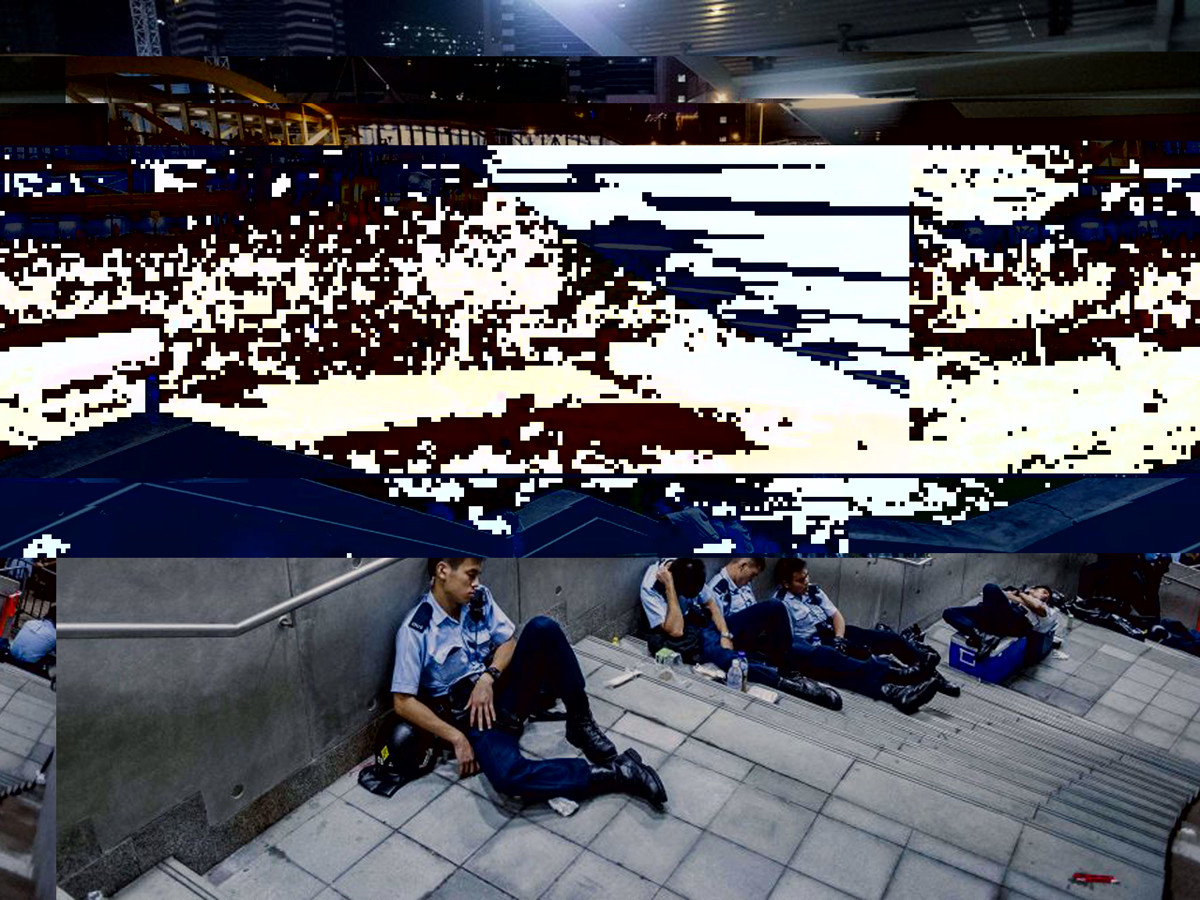

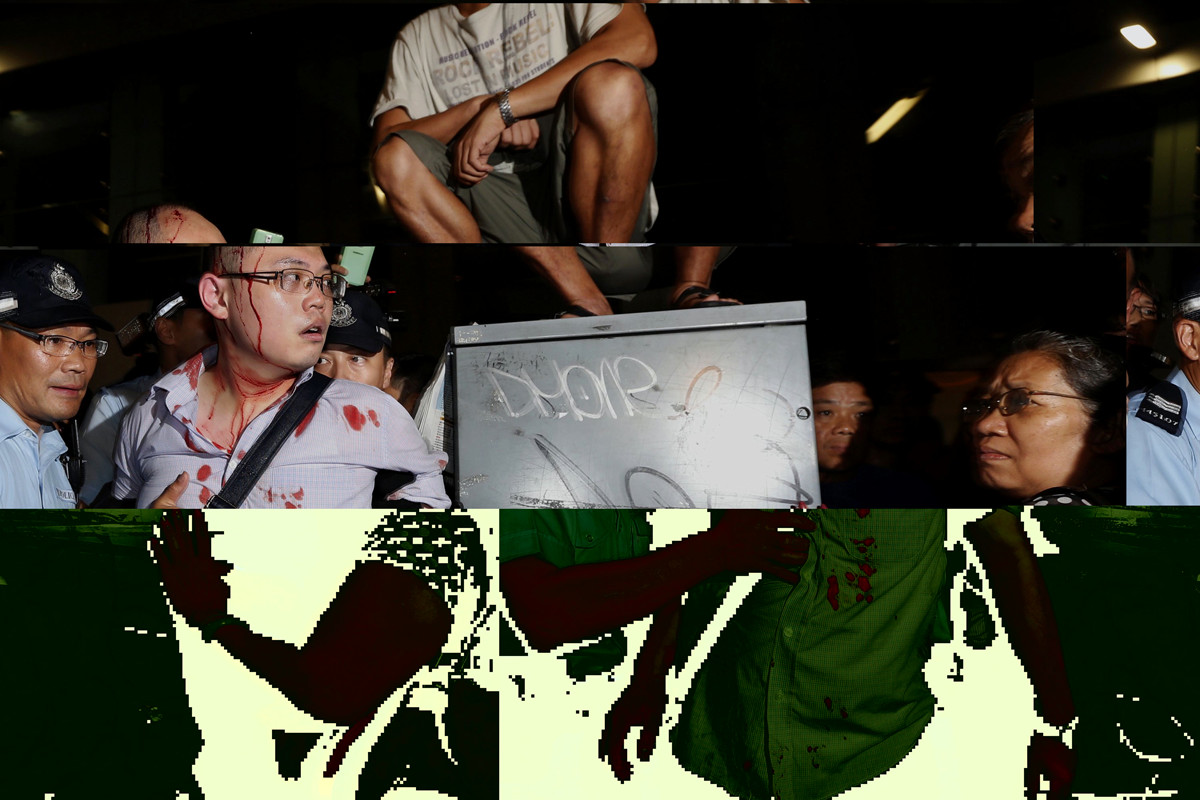
Carlos Aguirre at the Museum of Modern Art, Mexico City
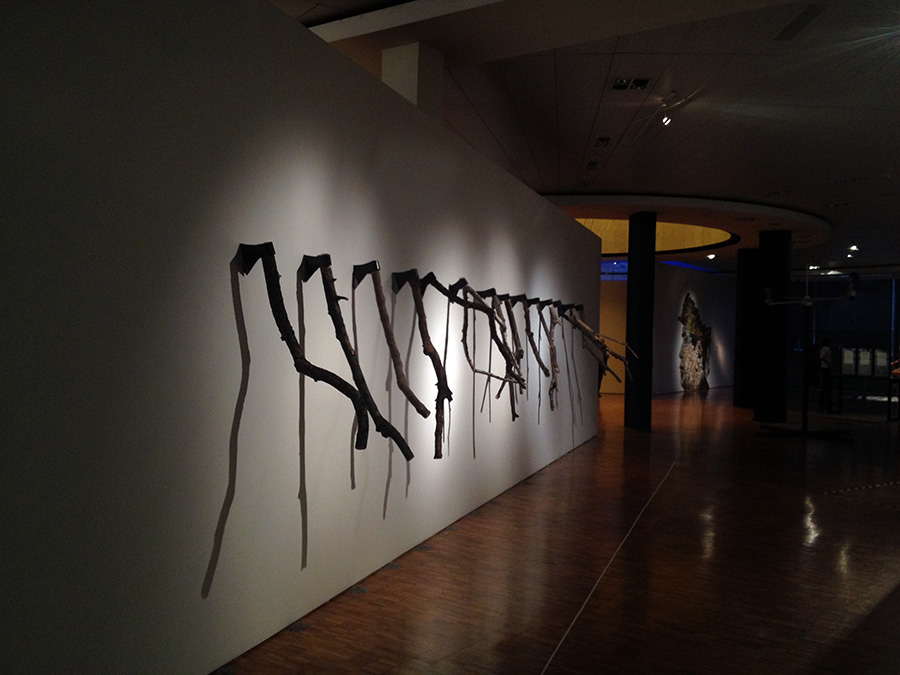
Between the Museo de Arte Moderno and Museo Universitario Arte Contemporanea (MUAC) there was a great deal of Carlos Aguirre (Acapulco, Mexico 1948) to take in this past month in Mexico City. “Zona de Riesgo” was the retrospective of the artist’s work from 1979 to 2014 installed at Mexico City’s Museum of Modern Art. The show was excellent and an amazing overview of an incredibly active artist. In general the exhibition is dark, even macabre as Aguirre appears to be driven by the violence of Mexico from the execution of criminals to excessive contamination.
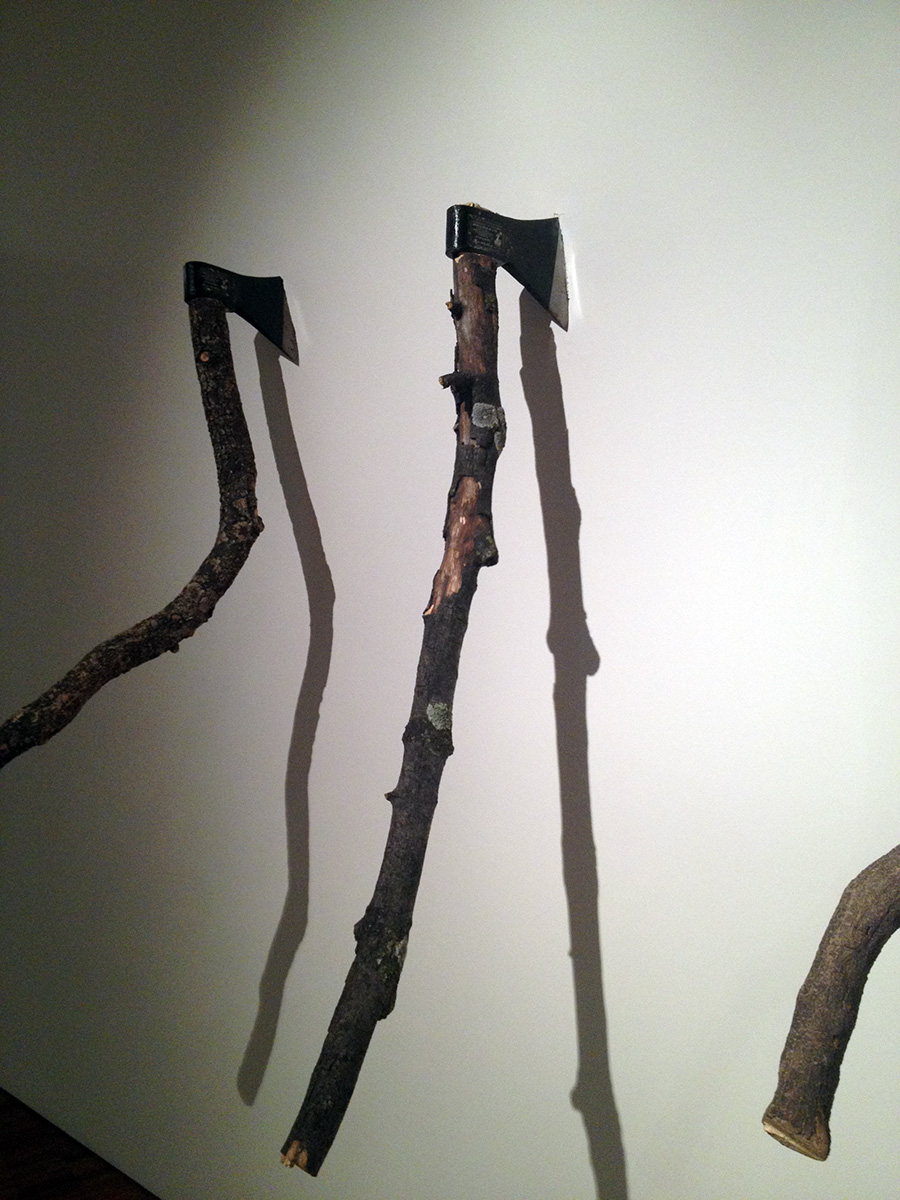
Upon entering the multi-gallery exhibition, one is greeted by a line of axes cleaved into a white wall. The blades of the axes are mounted on to branches, a powerful transformation of the ax that reminds the viewer of the violent nature of deforestation. In the early 1990s, Aguirre visualizes environmental impact with objects that may not be ignored such as blackened human lungs split open and cast in clear material hanging over a box filled with carbon.
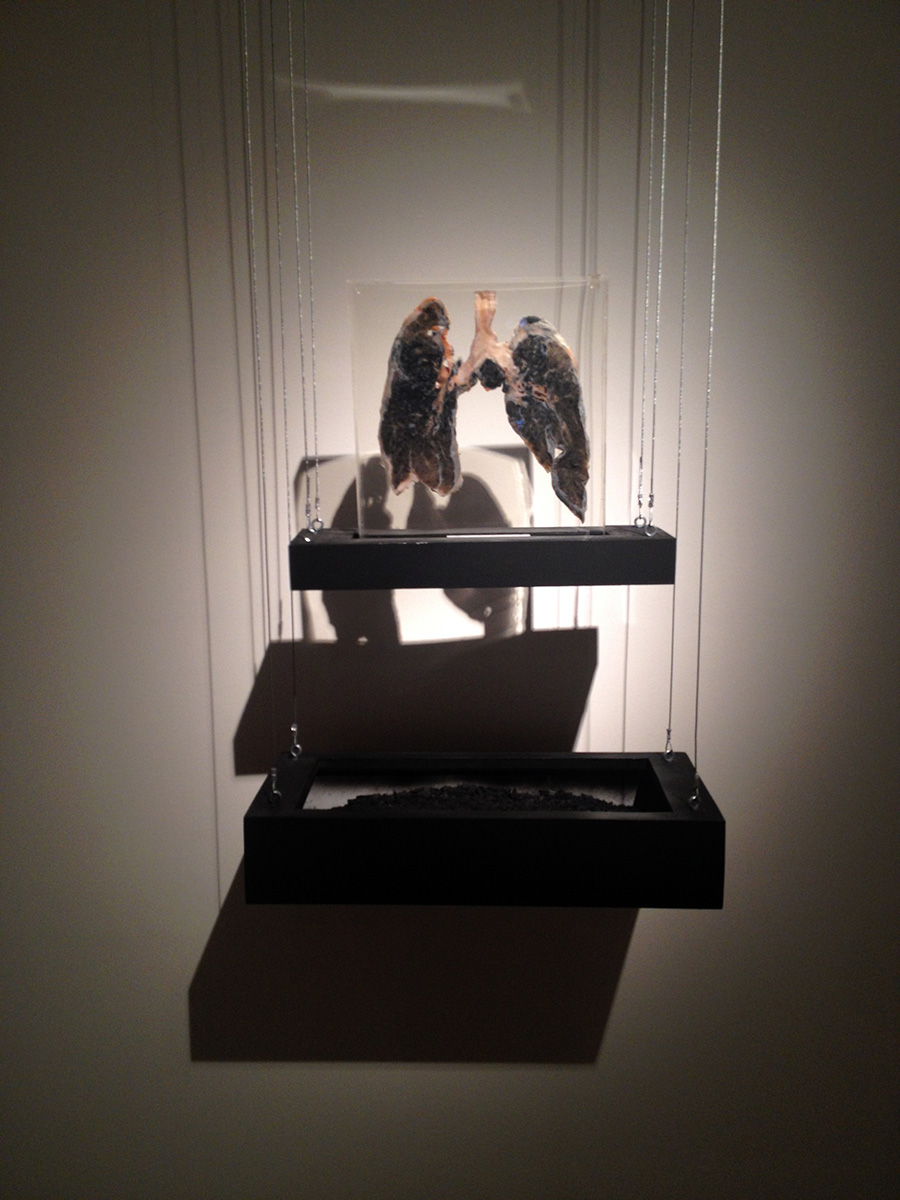
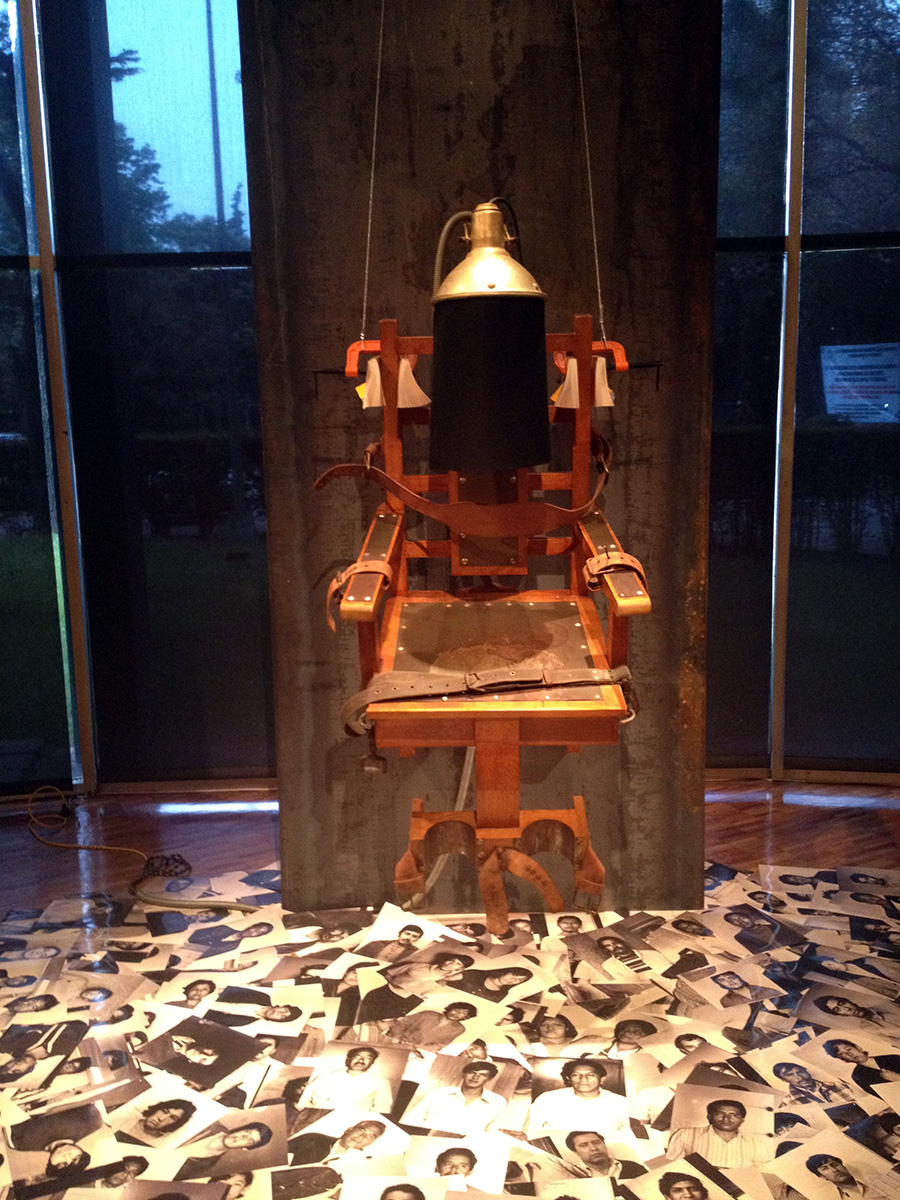
In the next gallery hangs an electric chair and below it the portraits of those executed. Near by is “Los olvidados” (1990), a giant portrait of a man in profile constructed from work gloves used by laborers.
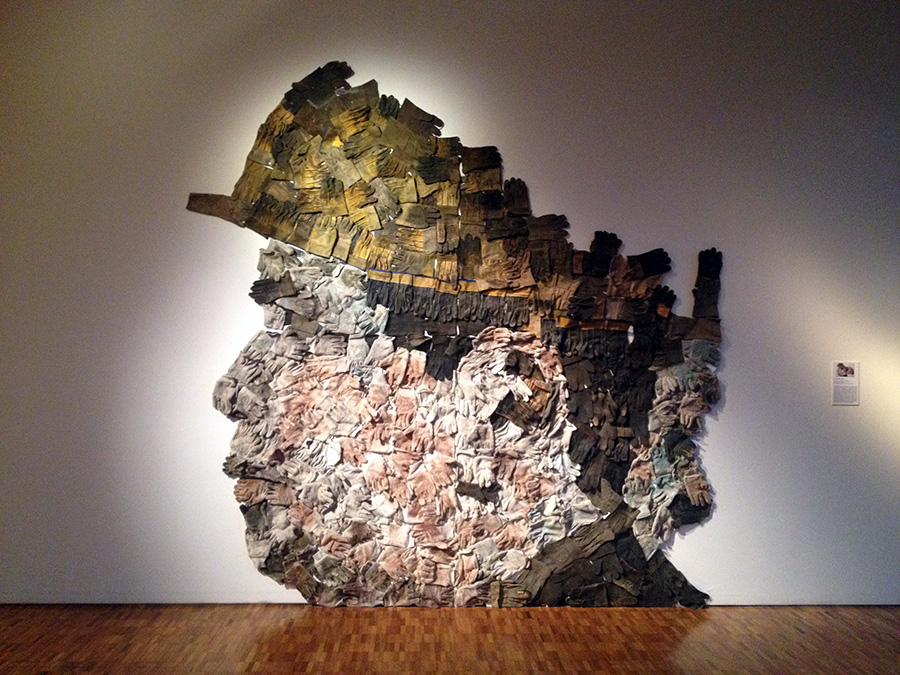
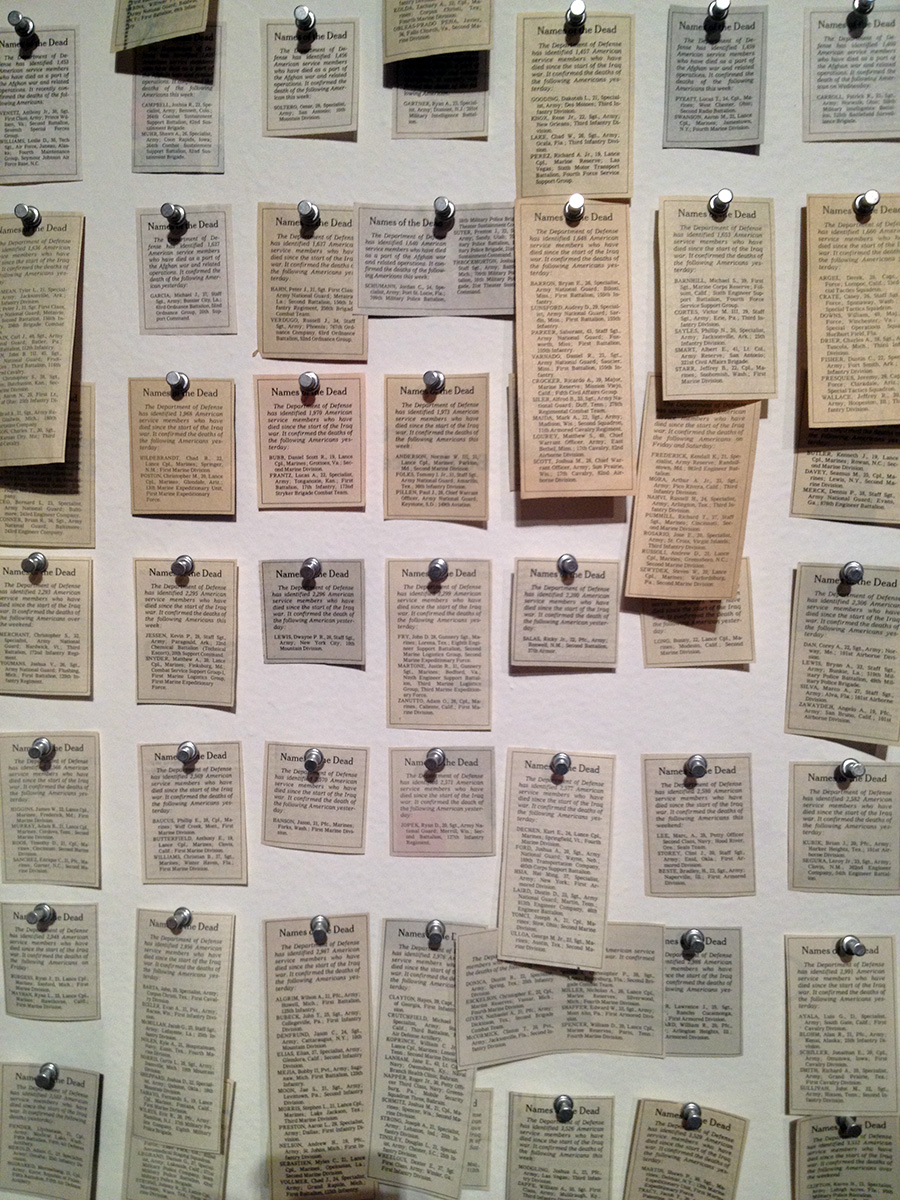
As I continued through the exhibition, I was drawn to a grid of small newsprint cutouts pinned to a wall. It was “Name of Dead” 1139 obituaries carefully cut out and posted to the gallery wall. The various galleries are joined by a large circular and domed area where “Dialectica, inteligencia vs. poder” (1995) is suspended. The piece is composed of many fire extinguishers hanging at various heights and at the center hanging at the end of a metal bar are a human brain and a small bust of Gustavo Díaz Ordaz, the president during the Tlatelolco massacre of 1968 when hundreds of unarmed protestors were shot.
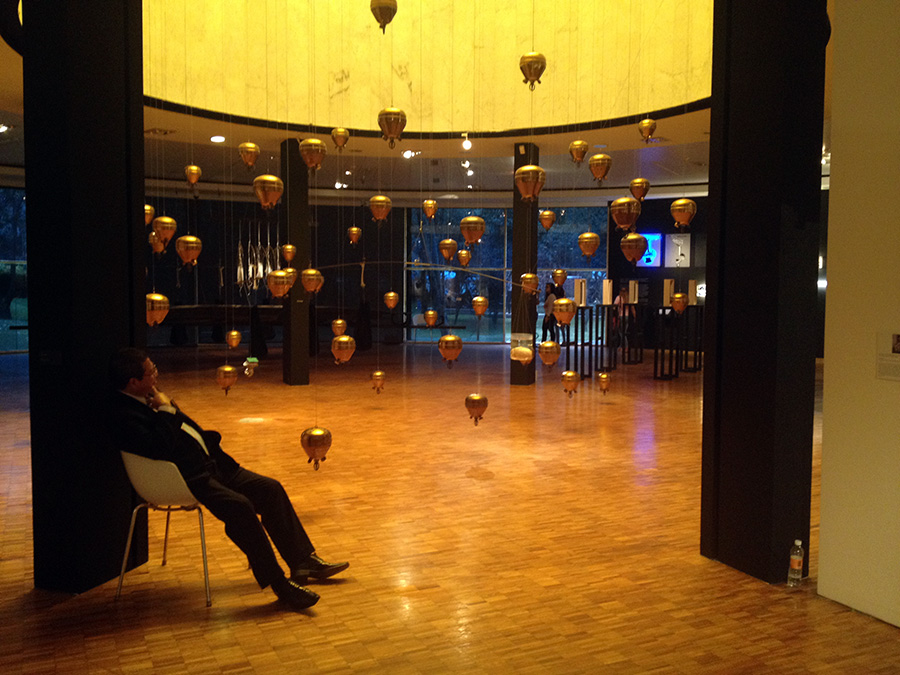
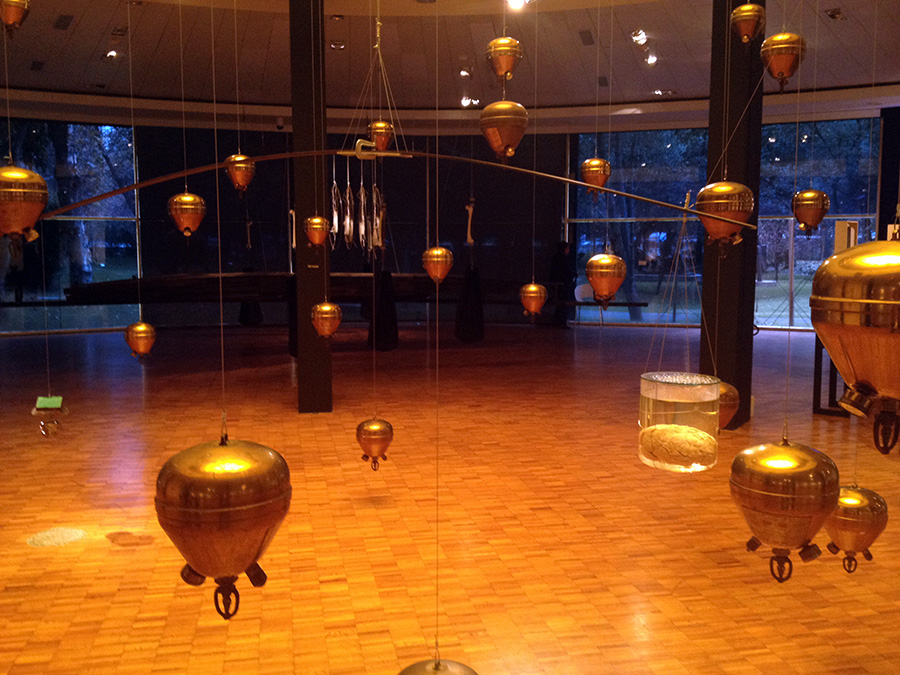
Beyond “Dialectica, inteligencia vs. poder” lies a dirt rectangle upon the floor and above the dirt are many shovels placed upon a wooden structure. When the dirt is inspected one will find human teeth and bones as well as corn.
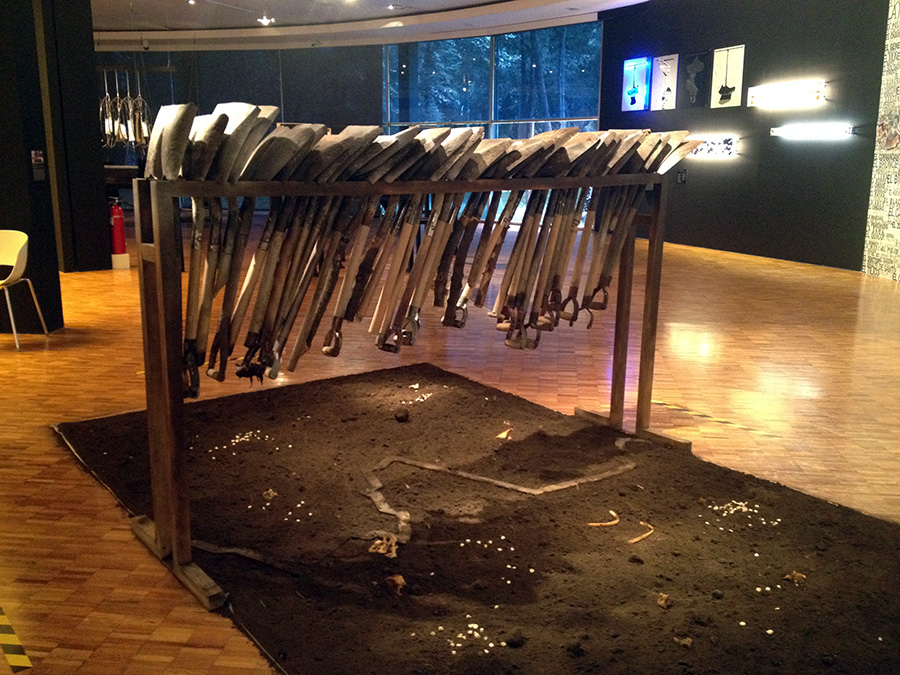
One of the final pieces in the exhibition is a black priest’s robe embroidered with 200 names of victims sexually abused by priests when the victims were children.
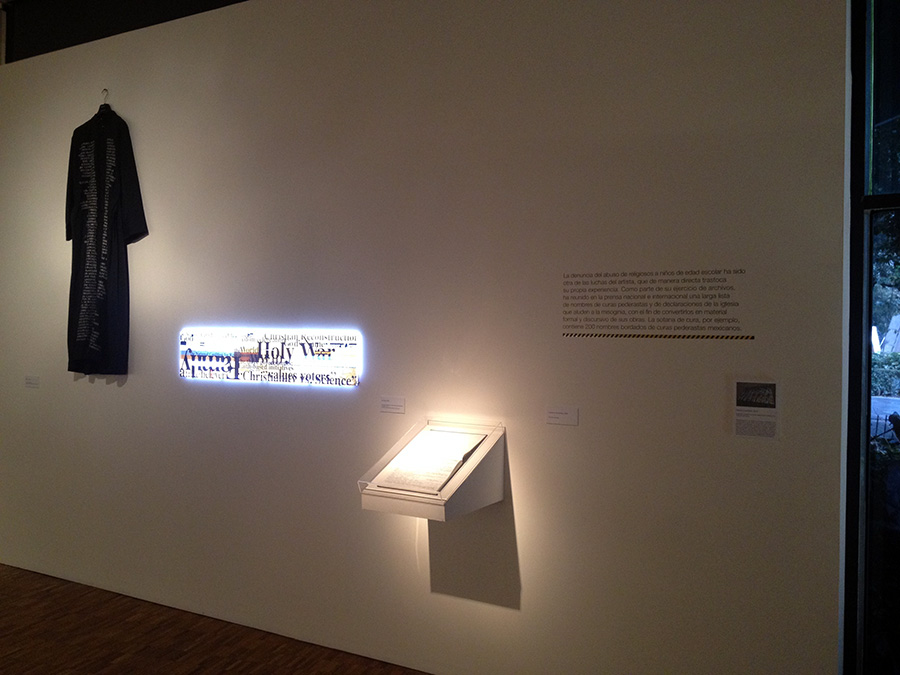
There is not much nuance in the visual metaphors constructed by Carlos Aguirre, instead the work is direct and confrontational. He makes it difficult to ignore the dark realities of our culture, Mexico’s reality is one giant risk zone or zona de riesgo.
At MUAC there is a large retrospective of the artist collective Grupo Proceso Pentágono in which Carlos Aguirre played a role during a period of time. For this exhibition, Aguirre rejoined the group to create a critique of the 43 missing students who disappeared on the night of September 26th 2014.
Walking Mexico City
Yesterday, Friday September 25, 2015, I enjoyed a free day in Mexico City (free of any work as I’m here for Transitio_MX 06). I headed to el Bosque de Chapultepec where I went to the Museum of Modern Art and then to the National Museum of Anthropology. The two exhibits that I enjoyed in particular at the Modern Museum were the solo exhibitions by Lorena Wolffer and Carlos Aguirre, both contemporary Mexican artists and both politically oriented. Carlos Aguirre being the older of the two appears to do primarily representational art inspired by violence in Mexico. Whereas Lorena Wolffer creates participatory work and does public actions, primarily related to violence toward women. Below are images from the travel to Chapultepec with the exception of this first image from Condesa.
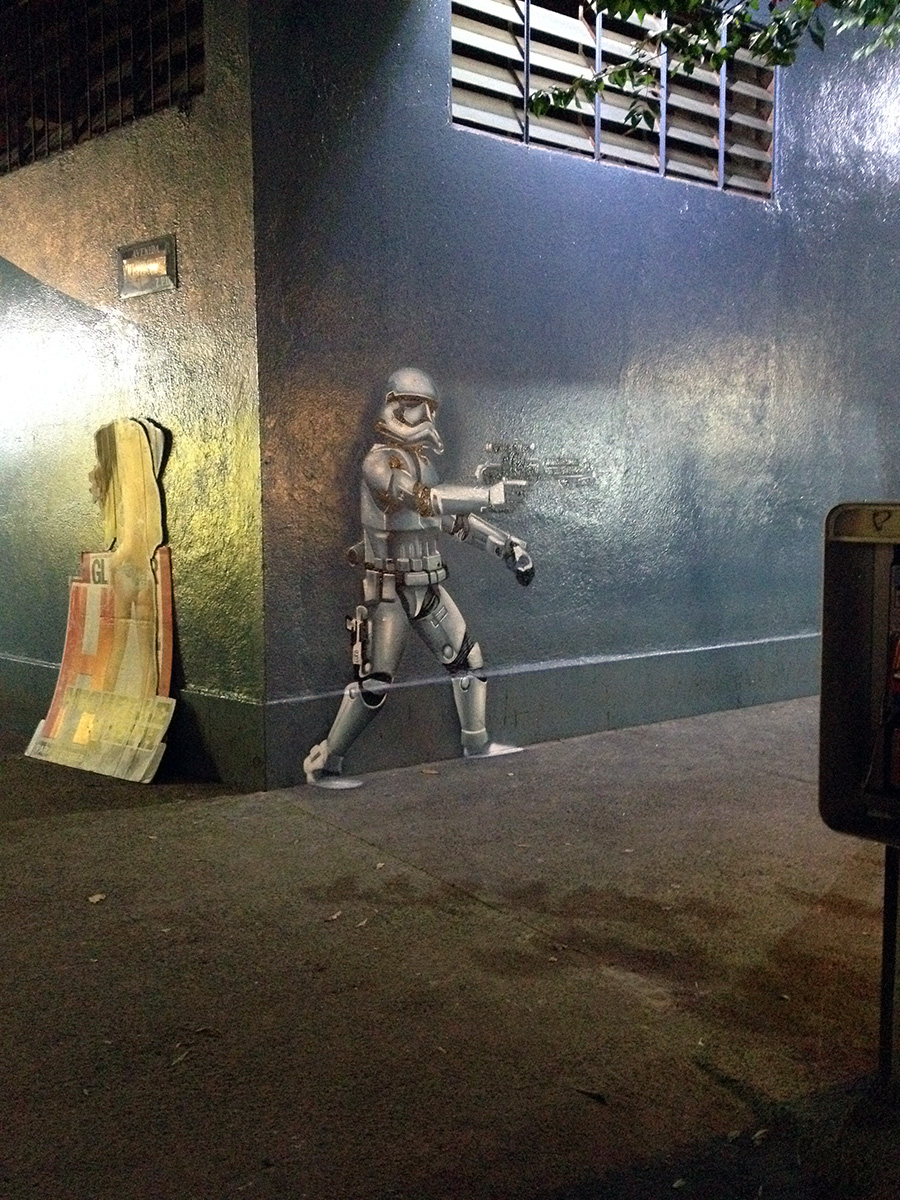
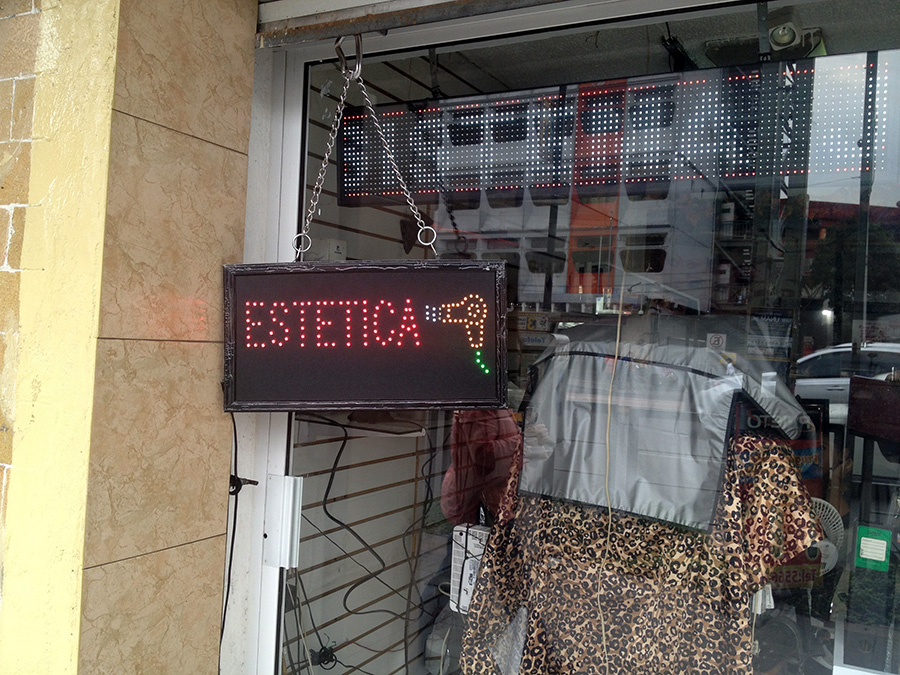
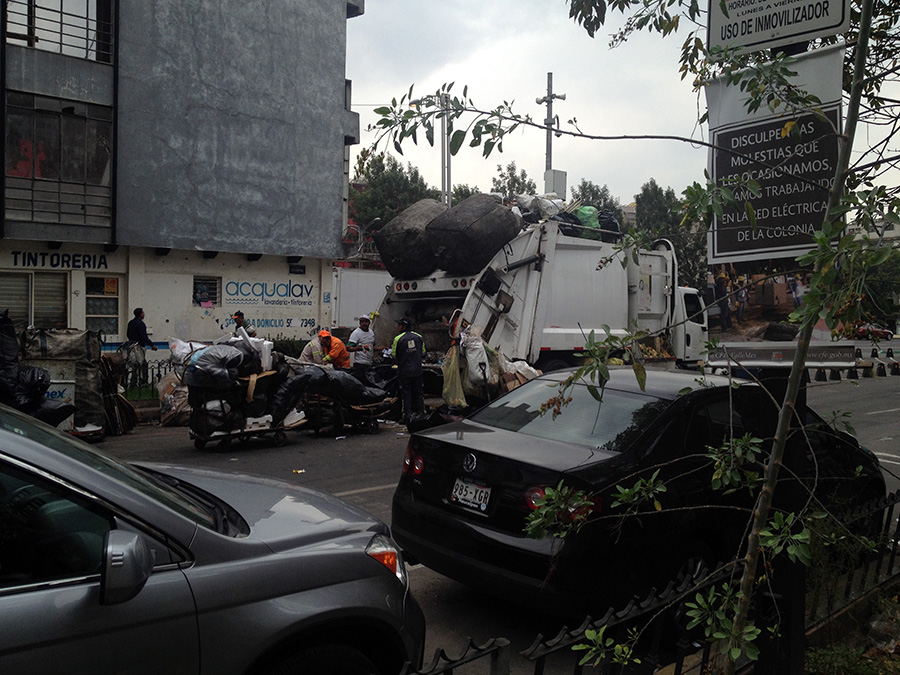
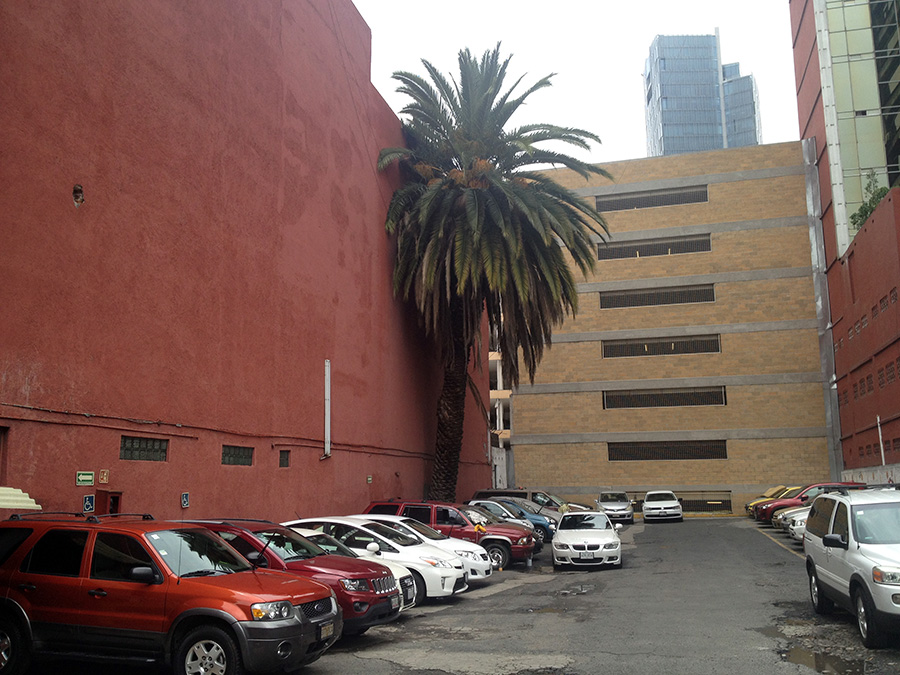
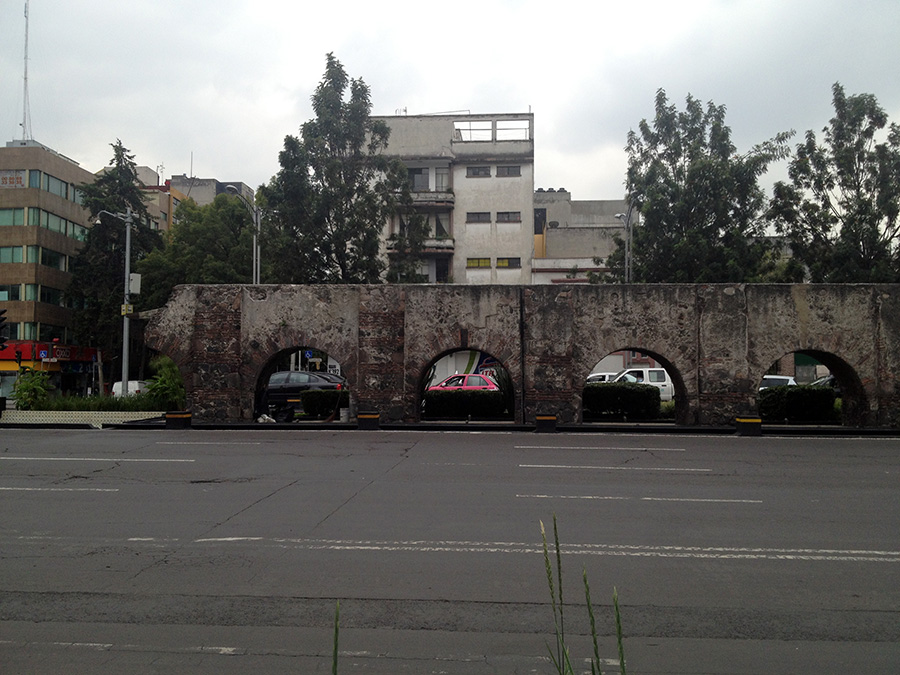
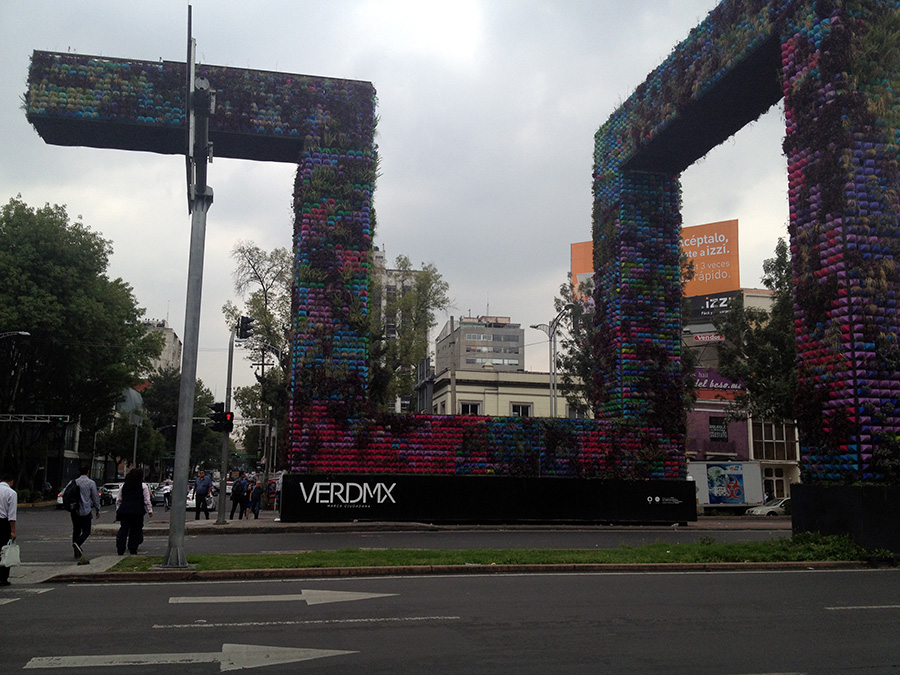
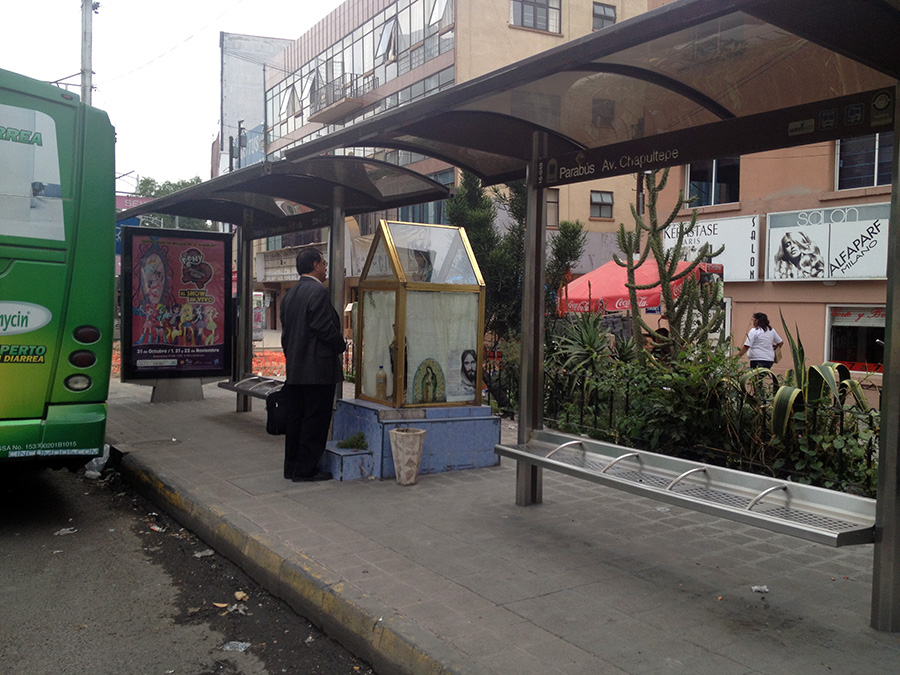
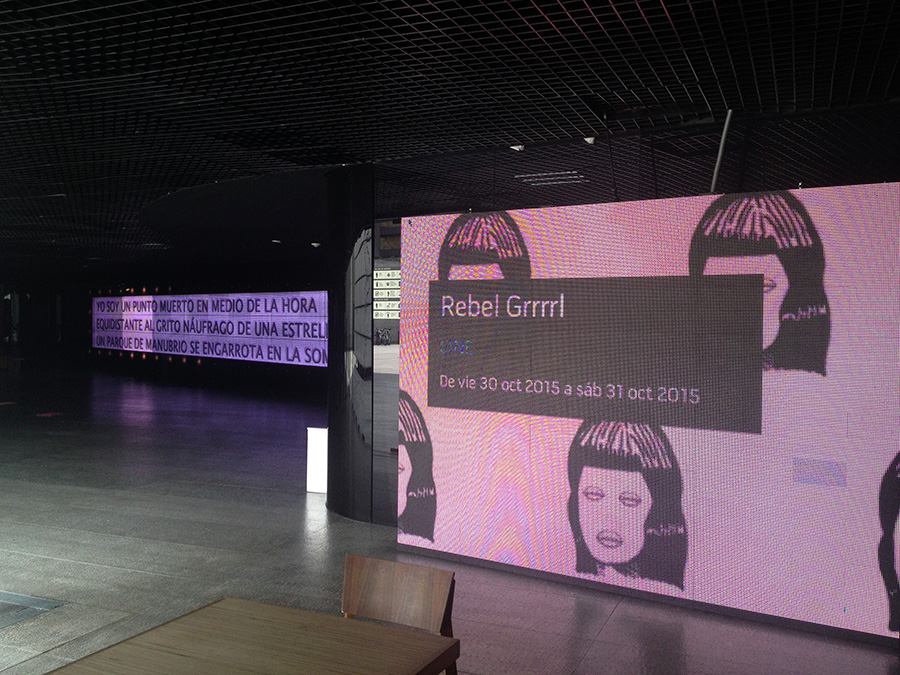
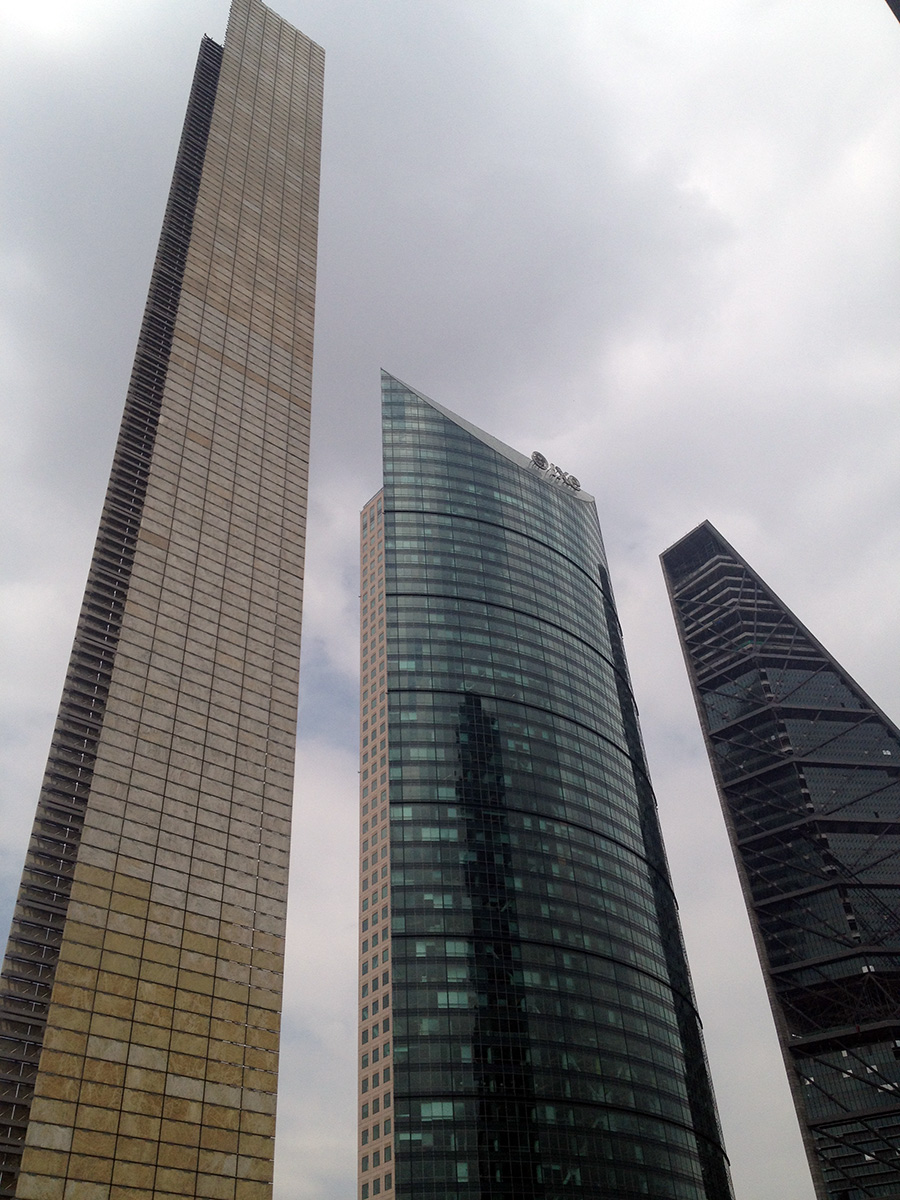
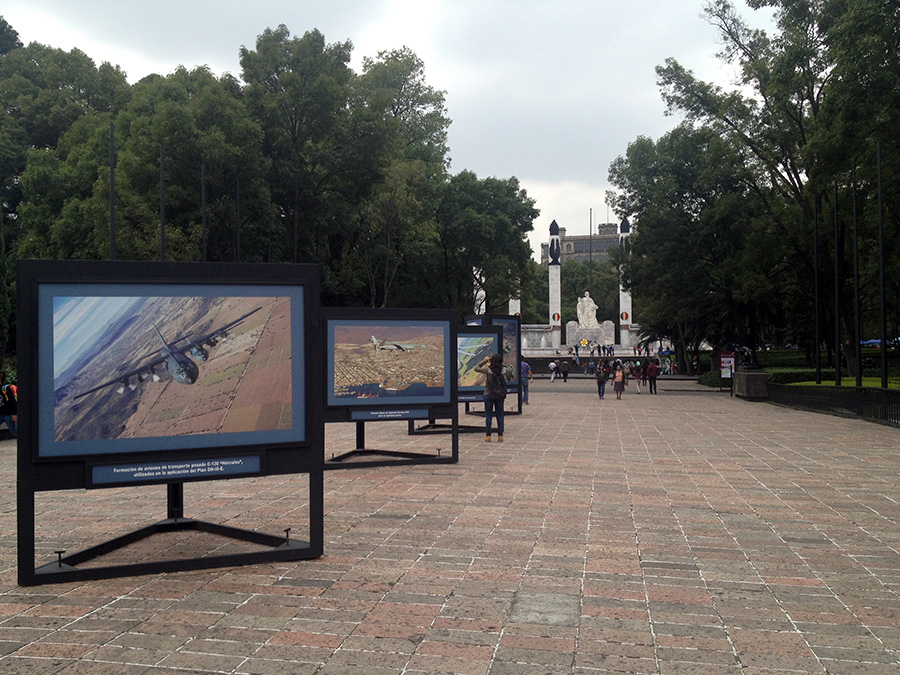
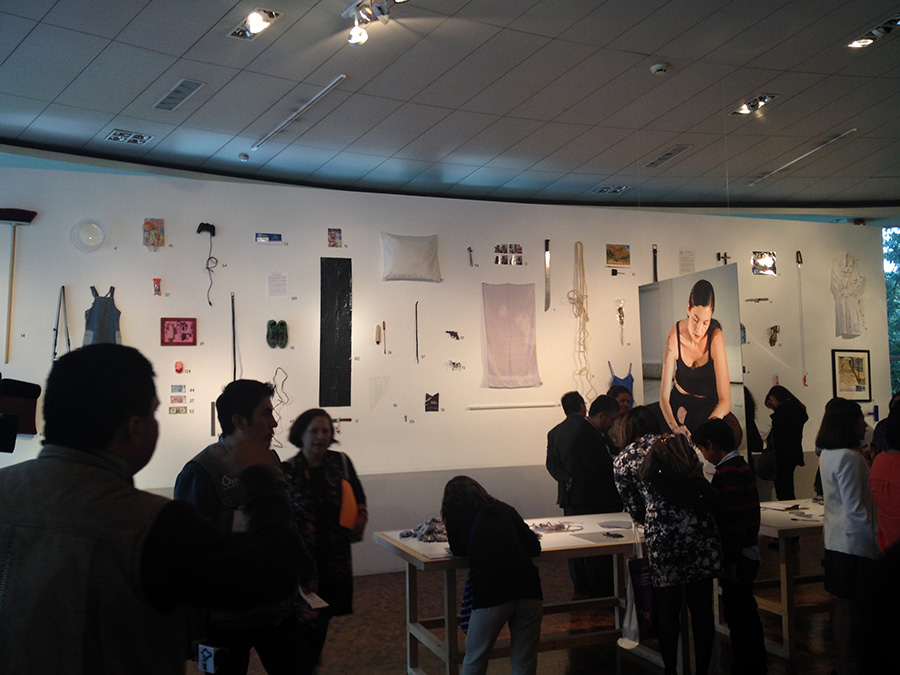
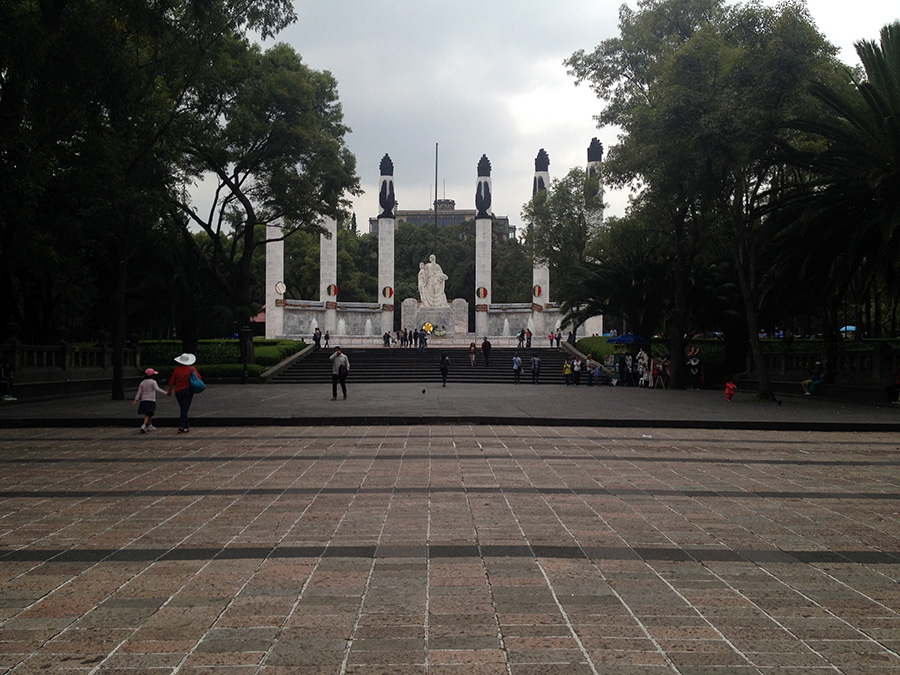

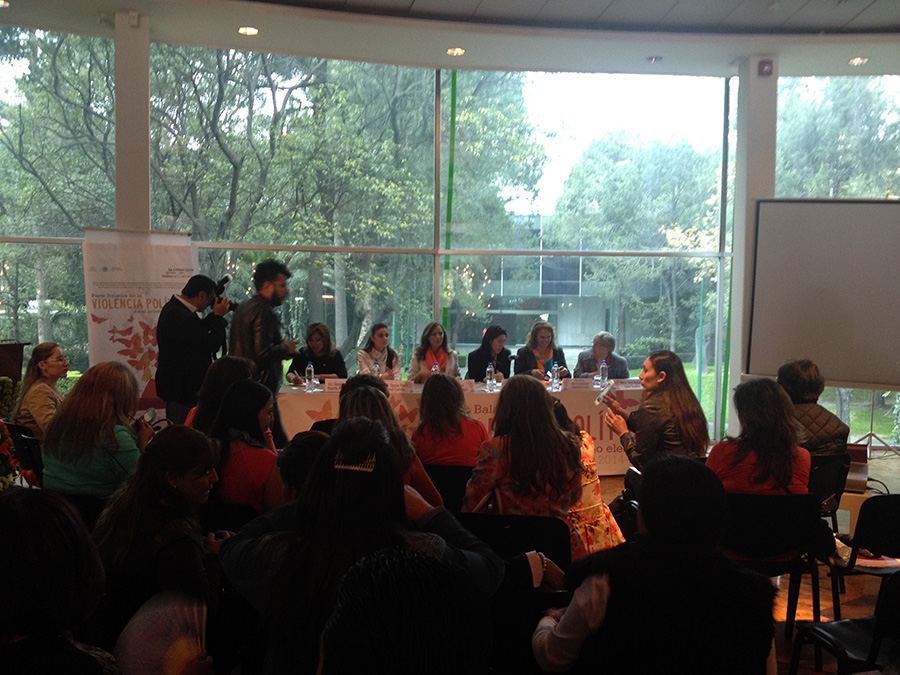
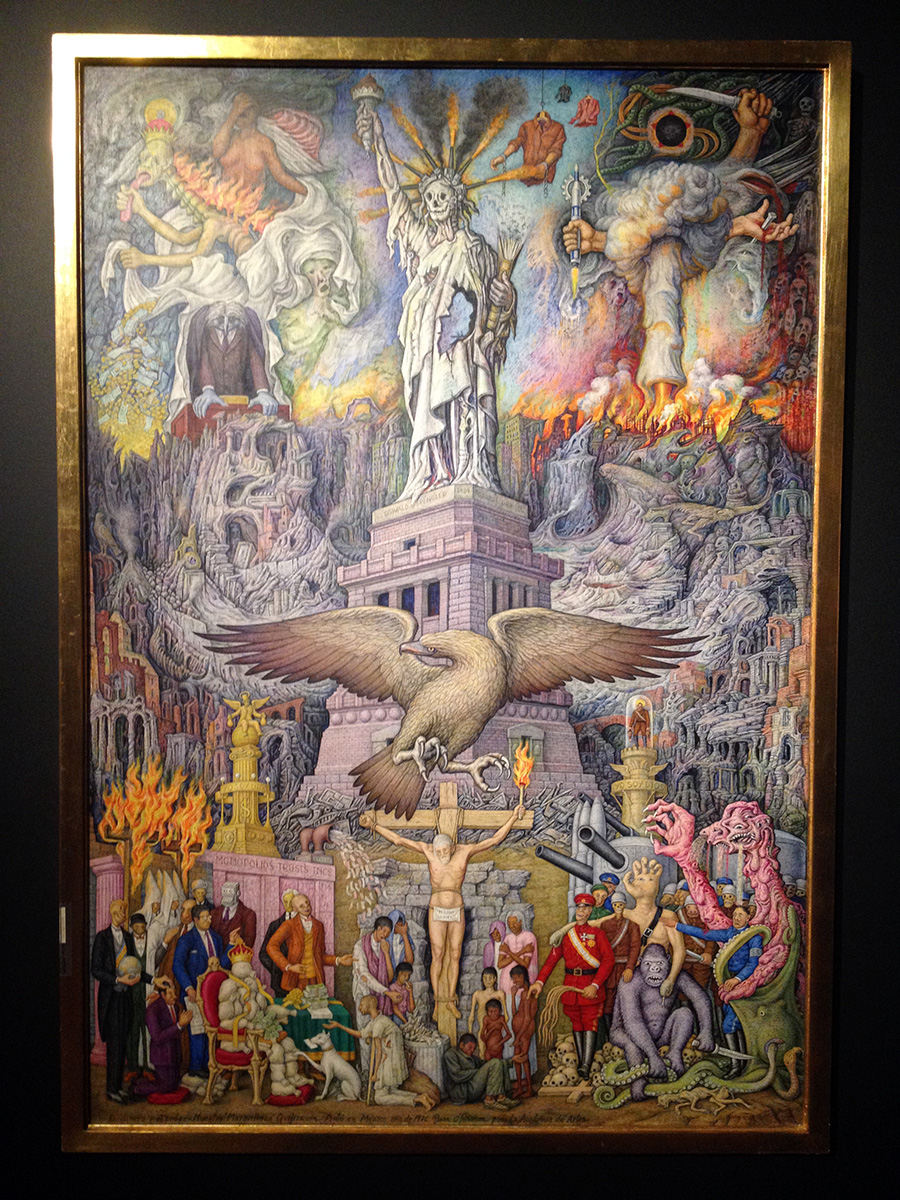
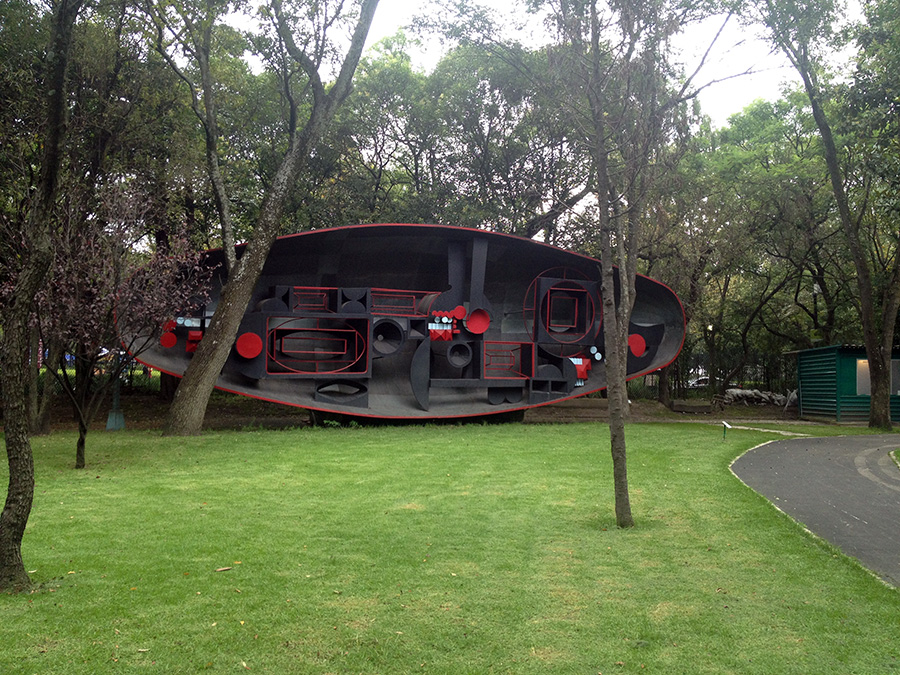
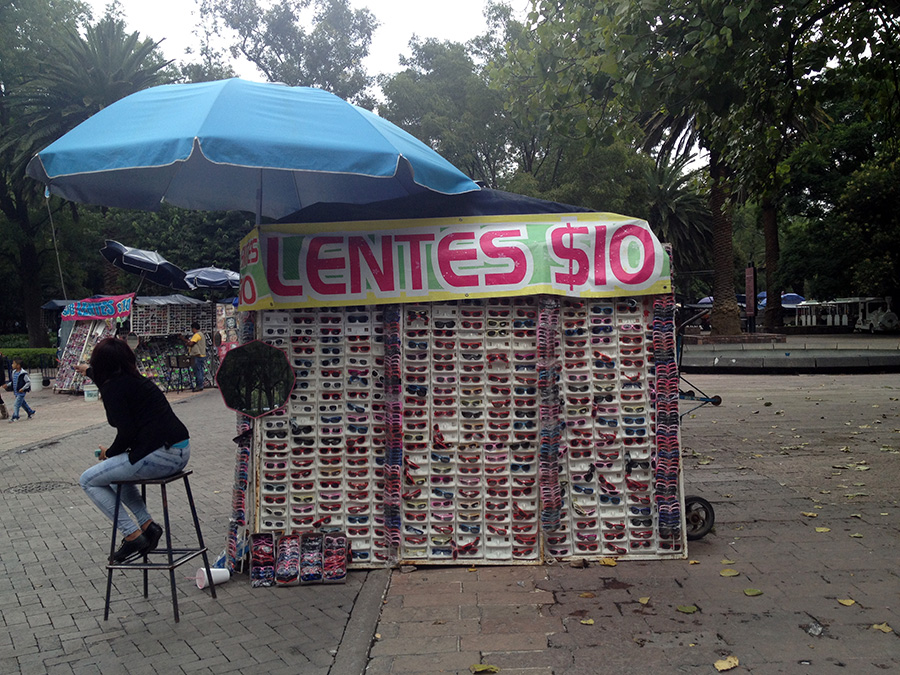
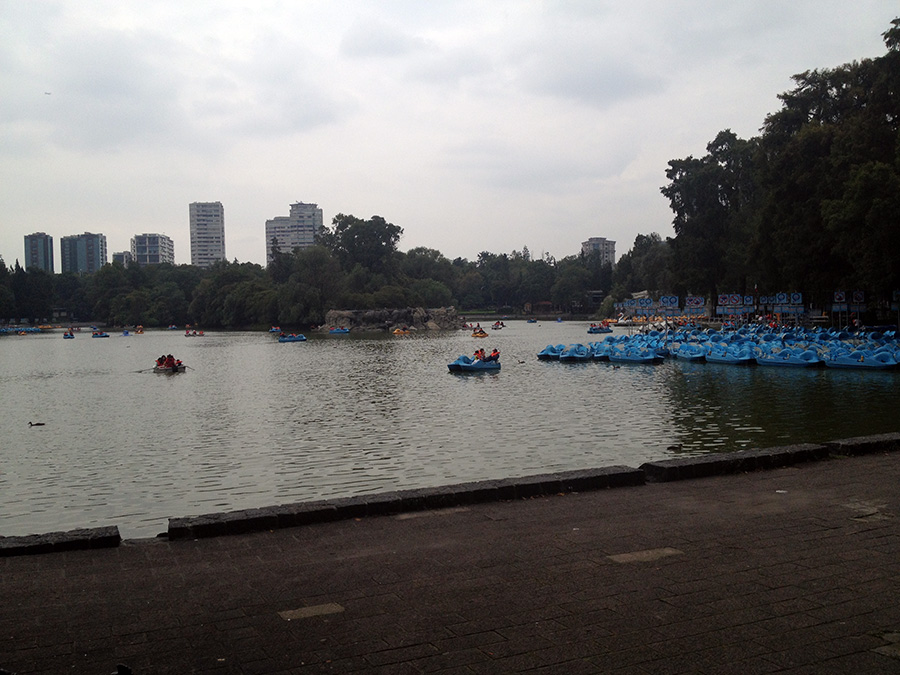
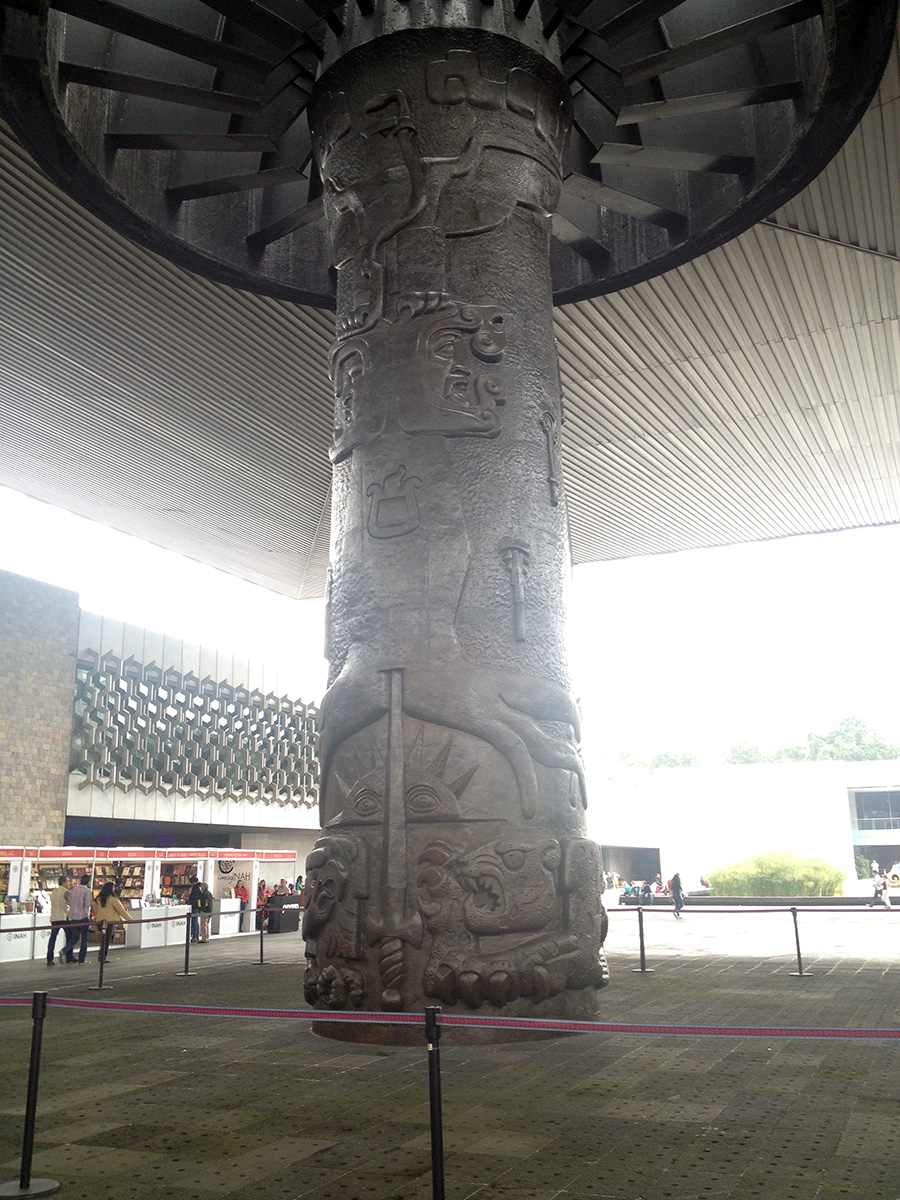
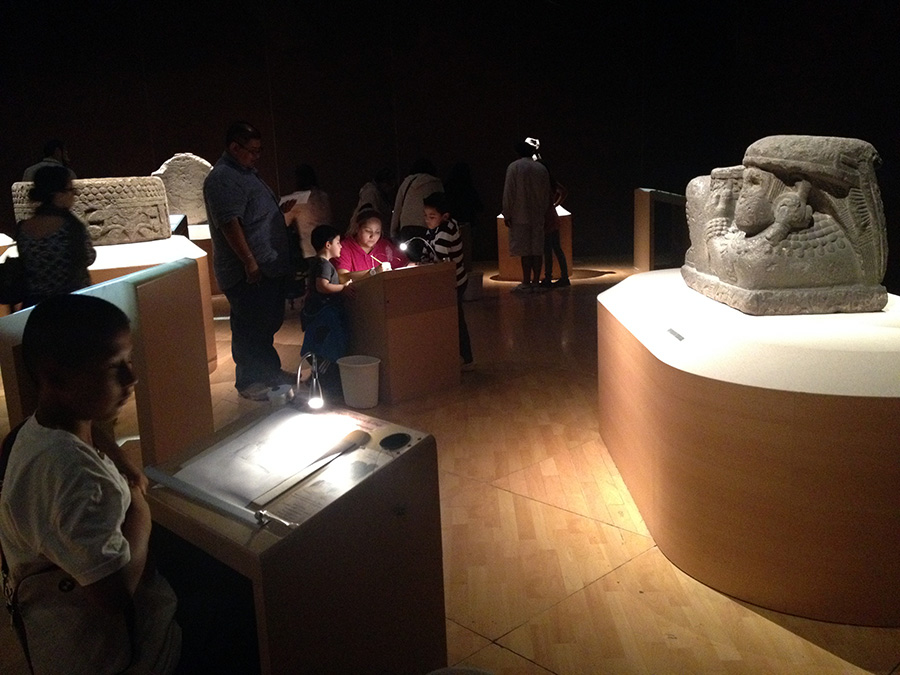
I love these drawing desks, placed in front of the Aztec sculptures so that anyone may sit and render the sculpture.